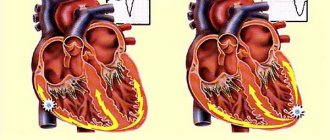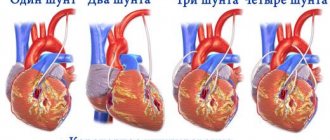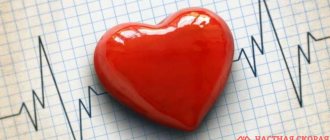In recent decades, cholesterol diseases have become widespread. They affect almost a third of the world's population - more than two billion people. Against this background, attention is increasingly being drawn to studies of how honey and cholesterol interact with each other. According to them, honey, unlike most other delicacies, does not contain “harmful” cholesterol. In addition, this bee product manifests itself as an antagonist (a substance that has the opposite effect on the body) of cholesterol.
Detailed description of the study
HDL cholesterol (high-density lipoprotein cholesterol, α-cholesterol) is the only lipid fraction that prevents the formation of atherosclerotic plaques in blood vessels (therefore, high-density lipoprotein cholesterol is also called “good” cholesterol). The antiatherogenic effect of HDL is due to their ability to transport cholesterol from vascular cells to the liver, where it is utilized and excreted from the body. Therefore, the content of this lipid fraction is very important for assessing the risk of developing atherosclerosis and its complications (coronary heart disease, strokes, etc.).
A decrease in HDL is most often observed with:
- disorders of lipid metabolism (so-called dyslipidemia);
- diabetes mellitus;
- chronic liver diseases with impairment of its functions (cirrhosis, hepatitis, liver cancer);
- kidney diseases with signs of chronic renal failure;
- general exhaustion (including cancer cachexia);
- severe acute bacterial and viral infections (short-term decrease in the indicator with its normalization after cure of the underlying disease).
Increasing HDL levels is considered an antiatherogenic factor and is therefore one of the main goals of antiatherosclerotic therapy (especially diet).
However, there are situations where an increase in HDL takes on a pathological character and indicates a severe pathology: alcoholism, primary biliary cirrhosis (the only type of cirrhosis in which HDL is high), chronic active hepatitis.
We fight cholesterol. How to save your heart and blood vessels?
About a quarter of the population is overweight. More than 18 million people worldwide die from cardiovascular diseases. At least 2 million people have diabetes. The common cause of all these ailments is high cholesterol, which affects about 147 million people around the world.
The problem has already been called a “national catastrophe”, but, unfortunately, not everyone takes it seriously. How to prevent severe vascular disorders?
Cholesterol: myths and reality
Cholesterol is one of the main building materials of the body. It is part of cell membranes, hormones, vitamin D, and nervous tissue.
The body really needs cholesterol, since the membrane of our cells consists of it. Therefore, no matter what we eat, the body will produce it and distribute it to create new cells and restore the membrane of old ones.
The main purpose of cholesterol compounds is to insulate nerve tissue and protect the cell membrane. Cholesterol promotes the production of hormones by the adrenal glands and sex glands. 80% of the substance is produced by it itself, the rest enters the body with the products we eat.
There are two types of cholesterol; in everyday life they are called “good” and “bad”. The substance itself is homogeneous and has neutral characteristics.
And the usefulness of the substance depends on how cholesterol is transported, what substances pick it up, and which lipoproteins it interacts with. It contains about 200 g in organs, mainly in nerve tissues and the brain.
The first type is represented by high-density lipoproteins, which prevent contamination of blood vessels with foreign deposits. “Bad cholesterol” to low-density lipoproteins that can settle in the vascular bed and create health problems.
There is also a type of very low density lipoprotein. Increased bad cholesterol in the blood, what does this mean? Once formed, a plaque does not disappear from the body. By clogging the arteries, it prevents the passage of blood and oxygen to the internal organs.
Gradually, the lumens of blood vessels narrow, and atherosclerosis is often diagnosed at a young age.
A life-threatening plaque is a plaque that turns into a paste of calcium and clogs the vascular bed by 75%. “bad” creates these problems , although its properties are often attributed to cholesterol in general.
Why do we need cholesterol?
- If cholesterol is within normal limits, it only has a positive effect on the body. In addition to creating a cell membrane that protects it from an aggressive environment, it also performs many other functions:
- Plays the role of a filter that recognizes molecules that need to be allowed into the cell and those whose access needs to be blocked;
- Controls the level of carbon crystallization;
- Serves as a stimulating substance in the production of bile acids;
- Helps synthesize vitamin D, which is essential for normal skin condition, using solar energy;
- Its optimal level improves metabolism, including fat-soluble vitamins;
- As part of the myelin sheath, it covers nerve endings;
- Normalizes hormonal levels (testosterone contains 50% cholesterol);
- Responsible for the degree of membrane survival;
- Protects red blood cells from the aggressive effects of hemolytic toxins;
- Helps the liver synthesize fatty acids necessary for processing fats;
- Activates serotonin receptors, eliminating depression.
But the body needs a tiny fraction of the cholesterol produced. Excess amounts pose a fatal risk to the heart.
Reasons for the increase in “bad” cholesterol – who is at risk?
The main prerequisite that contributes to the accumulation of excess cholesterol is an unbalanced diet, when an excess amount of fat enters the body (margarine (spread), mayonnaise, butter, fatty meat, crabs, shrimp, baked goods, high-fat fermented milk products).
By the way, the amount of cholesterol in lard is lower than in butter. According to nutritionists, you should consume 1g of fat per 1 kg of body weight per day.
Provoke an increase in “bad” cholesterol:
- Alcohol and smoking abuse, which have a toxic effect on the liver, where cholesterol is synthesized;
- Cardiac pathologies in the form of heart attack and angina;
- Diabetes mellitus – high blood glucose levels are an additional provoking factor for the production of “bad” cholesterol;
- Kidney failure;
- Extrahepatic jaundice;
- Hepatitis and cirrhosis of the liver;
- Pregnancy;
- Lack of growth hormone;
- Uncontrolled use of a group of drugs disrupts the metabolic balance;
- Frequent stressful situations increase the production of the hormone cortisol in the blood, which destroys protein tissue and increases the level of glucose in the blood;
- Excess body weight.
Men with large bellies are also at risk. Fat envelops internal organs, disrupting their function, increases intra-abdominal pressure, and negatively affects the function of the liver, which synthesizes cholesterol. This list also includes women during menopause, who have reduced reproductive function and the synthesis of female sex hormones.
Fans of low-fat diets are also at risk. Why do people need cholesterol when losing weight, and why should it come from food? When 20% of the required cholesterol does not come from food, the body begins to produce more of it.
Concentration camp prisoners had constantly high levels of cholesterol in their blood. In addition to the stressful situation, the cause was constant malnutrition with a complete lack of fat in the diet.
Other causes also influence the production of high cholesterol: hormonal medications, oral contraceptives, diuretics and B-blockers. Age will also be a risk factor, since over time the normal functioning of the body becomes more difficult.
Blood cholesterol level
In healthy people, cholesterol levels are quite high: normal levels do not exceed 1.0 mmol/l. A deficiency will create additional problems for the body.
The cholesterol limit for healthy people does not exceed 3.5 mmol/l.
In hypertensive patients and diabetics, this figure should be less than 1.8 mmol/l. Exceeding this norm can provoke the development of atherosclerosis. For total cholesterol, normal values should not exceed 5.2 mmol/l.
The most accessible way to determine your concentration of all types of cholesterol, which can be done in any clinic, is a blood test called a “lipid profile.”
Healthy people over 35 years old need to monitor whether their indicators are within the normal range at least once every 2 years. Patients at risk, as well as those who have (or have had) patients with vascular pathologies in their family, should be examined annually.
If levels are below 3.5 mmol/l, it is also recommended to consult a doctor.
Symptoms of High Cholesterol
Cholesterol is called the “gentle killer” because the desire to eat a cake or ham does not provoke pain, like a bad tooth. The accumulation of harmful substances is often asymptomatic.
When cholesterol concentrations increase, atherosclerotic plaques form in the body, which lead to cardiovascular and other health problems.
A number of nonspecific signs indicate elevated cholesterol in the blood:
- Cardiac pathologies. Coronary artery disease is a consequence of narrowing of the coronary arteries;
- The appearance of clots with significant bleeding;
- Chest and joint pain;
- Fat granulomas are painful inflammation of the skin;
- Yellow spots of fat on the skin under the eyes, small fatty spots in the corners of the eyes;
- Pain and heaviness in the legs even with minor exertion.
These are just the main signs, if identified, you need to undergo an examination. Signs of the disease often appear only when cholesterol levels have already reached critical levels.
What are the dangers of high cholesterol?
High cholesterol concentrations over a long period of time create conditions for the formation of severe pathologies:
- Coronary heart diseases caused by difficulties with blood saturation with oxygen;
- Vascular thrombosis;
- Brain stroke;
- Myocardial infarction;
- IHD;
- Kidney and liver failure;
- Alzheimer's diseases.
Excessive cholesterol content provokes the development of hypertension. Damage to the walls of blood vessels creates the preconditions for leg diseases - varicose veins, thrombophlebitis.
Diabetes mellitus is accompanied by dyslipidemia - a change in the proportions of different types of lipoproteins. As a result, diabetics have an increased chance of developing heart and vascular diseases.
Patients often find out about high cholesterol only after some complication occurs - coronary artery disease, heart attack, stroke. In men, a strict cholesterol-free diet reduces sexual activity; in women, amenorrhea may develop.
As you can see, high cholesterol significantly increases the chances of serious vascular diseases; it can literally kill a person, so our main task is to prevent its significant fluctuations.
Atherosclerosis in the first stages can be stopped, and nutrition in this matter serves as a powerful preventive measure. If high cholesterol is detected, you should try to reduce the level of the problem substance through nutritional correction.
10 simple rules for maintaining normal cholesterol:
- Vegetable oil (linseed, sunflower, olive, corn) with polyunsaturated fatty acids in small quantities (up to 30g/day) helps the synthesis of high-density lipoproteins. Excess oil thickens the blood.
- Lean meats and eggs. For a long time, eggs were considered a harmful product because they contain a lot of cholesterol. But they also contain a substance that helps dissolve it in the body.
But you still shouldn’t overeat: the norm for an adult is 1 egg per day. Dishes where they are in a semi-liquid state are useful, since the yolk is also an excellent choleretic agent. (You can also get rid of excess cholesterol through the bile ducts).
- Honey, cabbage, grated carrots are also on the list of recommended products. In general, you need to add a lot of fiber and dietary fiber to your diet, which contains vegetables and fruits. It removes 15% of cholesterol from the intestines, preventing its absorption. Due to the lack of fiber, canned foods are also included in the “black list”.
- Whole grain cereals contain a lot of magnesium, an anti-atherosclerotic agent that normalizes the production of healthy cholesterol.
- Thins the blood and restores blood flow and fish oil from northern fish species, rich in polyunsaturated fatty acids of the omega-3 group, promoting the production of high-density lipoproteins. Fish should be consumed 2-3 times a week. Rich in iodine, which lowers “bad” cholesterol, seaweed, cod liver, perch, and shrimp.
- Among the nuts, pistachios are the leader: if you eat them regularly (20-30g/day), cholesterol levels are reduced several times! Good results can be obtained from almonds or walnuts, which also contain useful acids. Nuts are added to salad, cottage cheese, porridge, dosing their consumption.
- Cranberries, tea, peppers, raspberries, blueberries and cherries with a high content of manganese, which reduces cholesterol levels, have proven themselves well in the fight against excess cholesterol. If blueberries should only be fresh, then cherries can be used after heat treatment.
- A very useful product is mushrooms, which, in addition to fiber, contain a special statin substance that blocks the production of low-density lipoproteins. In general, mushrooms are a difficult food for the stomach, so moderation is important.
- Beans absorb and eliminate excess cholesterol. It is enough to eat 200 g of legumes per day (boiled) so as not to think about excess cholesterol. It is useful to include artichoke or its extract in the menu.
- Citrus fruits, which contain pectins that bind “bad” cholesterol in the gastrointestinal tract, also reduce cholesterol. In this case, grapefruit must be eaten with a white film. Baked apples also contain a lot of pectin.
Nutritional Features
With high cholesterol, modifying your diet for the rest of your life is one of the main factors in the fight against such disorders. The main principle of a healthy diet is that fats in the menu should not exceed 30%.
Moreover, these should mainly be unsaturated types - those that contain fish or nuts. If you adhere to these rules, you can not only reduce the concentration of unwanted cholesterol, but also increase the percentage of useful cholesterol.
A healthy diet involves avoiding the use of trans fats, from which margarine or spread is made. Freak molecules are also present in confectionery products made on its basis.
Liver is a good source of vitamin A, but it also contains a lot of cholesterol, as does fish roe. If you limit these foods in your diet, “bad” cholesterol can be reduced by half. The ban also applies to red meat, instead of which lean chicken is recommended.
Boiling foods, as opposed to frying them, reduces cholesterol levels by 20%.
Drug cholesterol lowering
Modifying dietary habits is not enough to normalize high cholesterol levels, because it depends not only on what we eat: it is largely produced by the liver.
If its levels are very high or there is a serious cardiovascular risk, doctors recommend taking medications that lower high cholesterol for life. The most commonly prescribed drugs are statins, which block the synthesis of a substance in the liver.
Cholesterol and pregnancy
The lipid profile during pregnancy changes significantly in the 2nd and 3rd trimester. In this case, the content of lipoproteins can increase by one and a half to two times. But such indicators should not be a cause for concern, since the intensive work of the liver is aimed at the needs of the developing fetus.
And one last little secret: be more happy. Endorphins (hormones of happiness), which the body produces at this moment, help reduce the level of “bad” cholesterol and related health problems.
Be healthy!
Kuzmich Tatyana Nikolaevna,
Head of the regional cardiology department
Useful properties of honey
Both harmful and beneficial types of cholesterol are supplied daily with food and are produced by the body itself. An increase in con species in the blood can be an alarm bell for people of any age. It can lead to the formation of cholesterol plaques in the walls of the arteries and the development of vascular atherosclerosis against their background. This condition has a detrimental effect on the functioning of the cardiovascular system, causing disruptions in it - circulatory disorders, gas exchange, complications in the form of ischemia, strokes and heart attacks.
Honey does not contain either vegetable or animal fats; it consists of water (up to 23%), a small amount of protein (less than 0.79%) and carbohydrates, which are its main part - about 75%. Thanks to the content of B vitamins, flavonoids, phytoncides (these are natural antibiotics produced by plants), ascorbic acid, potassium, sodium, calcium, chlorine, fluorine, magnesium and iron ions, it has a number of beneficial properties:
- Increases immunity, helps the body quickly overcome viral and bacterial infections.
- Phytoncides suppress inflammation processes that occur in blood vessels against the background of high cholesterol.
- Flavanoids stimulate antioxidant processes, inhibit cellular aging, protect tissues from neoplastic processes, and reduce blood cholesterol.
- Has an anti-inflammatory effect.
- Can be used as a natural antiseptic - to reduce inflammation and disinfect damaged skin.
- Using honey for high cholesterol is effective due to the high content of microelements in its composition.
- It has a positive effect on bone and dental tissue, heart and blood vessels, and normalizes systemic blood pressure.
- Psychological and emotional states are strengthened.
- Relieves severe headaches.
Contraindications
Honey is a universal remedy for treating various diseases of the heart and blood vessels. But this healing technique is not allowed and harmless for everyone. Despite the breadth of its use in traditional medicine, this sweet product also has contraindications:
- Common allergic manifestations to bee products in general and their components.
- High caloric intake can contribute to obesity, which itself will cause the liver to increase production of the harmful type of cholesterol.
- Due to the content of sucrose and glucose in its composition, it is contraindicated for people with diabetes mellitus (high blood sugar).
- Recipes with cinnamon should not be prescribed to pregnant women (causes spasms and contractions of the uterus), hypertension (can provoke an increase in heart rate), digestive disorders, background use of anticoagulants and high fever.
- Recipes based on lemon and garlic are contraindicated for diseases of the gastrointestinal tract.
Traditional medicine recipes
It is believed that darker types of honey are better for cholesterol. This beekeeping product is very quickly absorbed and digested in the gastrointestinal tract, so its constituent substances quickly enter the bloodstream. Despite this, it should be remembered that therapy with traditional recipes requires endurance, and the result will be visible only after a certain period.
There are three most common honey-based remedies for lowering cholesterol - combinations with cinnamon, lemon and garlic.
1. Honey with cinnamon
You will need 1 glass of boiled hot water, in which you need to stir 1 teaspoon of ground cinnamon. After this, leave for 30 minutes and filter. Add one tablespoon of nectar to the resulting mixture. We divide it into two doses - the first portion should be drunk on an empty stomach in the morning, and the second in the evening before bed, 20-30 minutes. Repeat daily.
These products can be combined in other forms. For example, regularly eating a piece of grain bread with honey and cinnamon for breakfast in a ratio of 2 to 1, respectively, will also have a quick and necessary effect on the body. The biological substances of cinnamon remove excess salts, improve the functioning of the stomach and increase the body's reactivity (the ability to fight infections due to strong immunity).
2. Honey with lemon
Take 1 glass of heated water, mix 1-2 tablespoons of honey and juice squeezed from 1 half lemon. This remedy should be drunk before breakfast every day.
3. Honey with garlic
The most famous is the honey-based garlic-lemon mixture. To prepare it you need the following ingredients: 4 heads of garlic, 5 lemons, 200-250 ml of natural nectar. In a blender, meat grinder or grater, grind the citrus without separating the peel and cooked peeled garlic. Add honey to the resulting mass, mix thoroughly and place in the refrigerator to infuse for one week. After that - 1 tablespoon 3 times a day. Therapy with this remedy is performed once a year and lasts at least one month.
Is it possible to eat honey if you have high cholesterol?
You can and should eat honey for cholesterol, but only after consultation with a specialist. Nectar owes its effectiveness to its rich chemical composition. Almost every component has the unique property of reducing the amount of harmful cholesterol. Thanks to them, unnecessary substances are quickly removed from the bloodstream, blood flow through the vascular system is stabilized, blood vessels are cleansed of cholesterol - already formed fatty plaques are removed, and phytoncides help to subside inflammatory processes in their place.
Scientists conducted a series of studies on the use of honey for high cholesterol. It was found that taking nectar before breakfast in a dosage of 20 grams for two hours helped reduce the level of bad cholesterol in the blood of patients by 10-12%. To achieve this result, honey must be eaten with other foods that correct and enhance its effect.










